
1865
Formation of the following societies
The Railway Workingman’s Provident Benefit Society
The Engine Drivers’ & Firemen’s United Society
HAYLING ISLAND LINE
on the 17th July 1867. A loco shed was erected at South Hayling in 1872
The formation of the Engine Drivers and Firemen’s United Society established in 1865.
‘Parliamentary Trains’
Victoria Railway Station
Workmen's Penny Train 1865
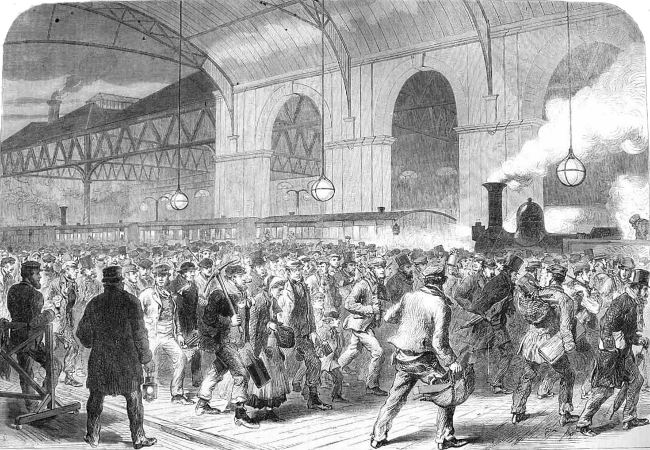
THE ILLUSTRATED LONDON NEWS
22nd APRIL 1865
‘ Workmen’s Penny Train ' arriving from the suburbs of south London, at London Victoria just before 6 a.m. each work day morning.
As the railway companies drove their main lines into central London, this resulted the wholesale demolition of houses formerly inhabited by people of the working class. In some cases the only compensation was the sum of 1s 6d towards the cost of moving.
Parliament insisted that the railway companies which caused disruption should provide a special train service to convey workers between their place of work and the new suburban lodgings to which, it was hoped, they would have moved.
The Parliamentary Act of 1860, authorising the construction of the metropolitan extensions into the London, with the opening of London Victoria. The Act was the first to include a clause requiring a railway companies to run a Workmen’s Train. This was intended to compensate for the destruction of working-class housing within central London and by providing those displaced with a means of moving into the suburbs and commuting to work.
The act also required to run at least one Workmen’s Train daily at 12 miles per hour or faster, charging no more than a penny per mile, and its was a requirement that seats in carriages that were protected by the weather. The morning trains from each end of line start at five minutes before five o’clock and arrive shortly before six o’clock. The evening trains for five days started at quarter past six and Saturdays starting half past two in the afternoon.
The London, Brighton and South Coast Railway had just spent £2 million to widen Victoria station. It’s manager, William Forbes, objected to overrunning their new glorious facilities with Workmen’s Trains “It will turn Victoria into an Elysium for workers and a Hades for the rest of the community.”
In 1865, Victoria became the scene of an interesting social experiment which enabled workmen to travel on two trains daily, either on their way to work or going home, at the special weekly ticket price of one shilling.
The scene of an accident near Croydon 1865
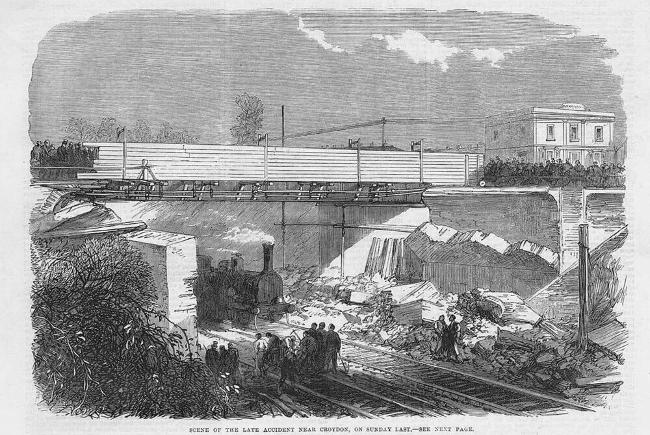
Railway accident on the
L.B.S.C.R.
from http://www.railwaysarchive.co.uk
Brighton Ticket Collection Platform 15th April 1865
no mention of Enginemen
SEE SUB PAGE
Epsom Downs Station opened on the 22nd May 1865

The first ever published image of Epsom Downs station comes from the Illustrated London
News Supplement, 3rd June 1865
The terminus station had nine platforms, which included run round road and a turntable.
There was no loco shed built at Epsom Downs.
THE BEGINNINGS OF INDUSTRIAL UNREST ON THE
BRIGHTON RAILWAYS
During the 1860s, Enginemen and Firemen around the country started to realise that they had industrial muscle and by standing together they might be able to resolve various grievances within the many railway companies that made up the increasing size of Britain’s Railways at the time.
Many of these companies during this period faced industrial unrest with Enginemen and Firemen in their employment who where trying to improve their often appalling working conditions. With Enginemen striking for better working conditions they run the risk of being sacked and in some cases the Railway Companies when bankrupt as a result of their action. It was not uncommon for Enginemen and Firemen at this time to be expected to work for up to 16 hours a day often for 7 days a week.
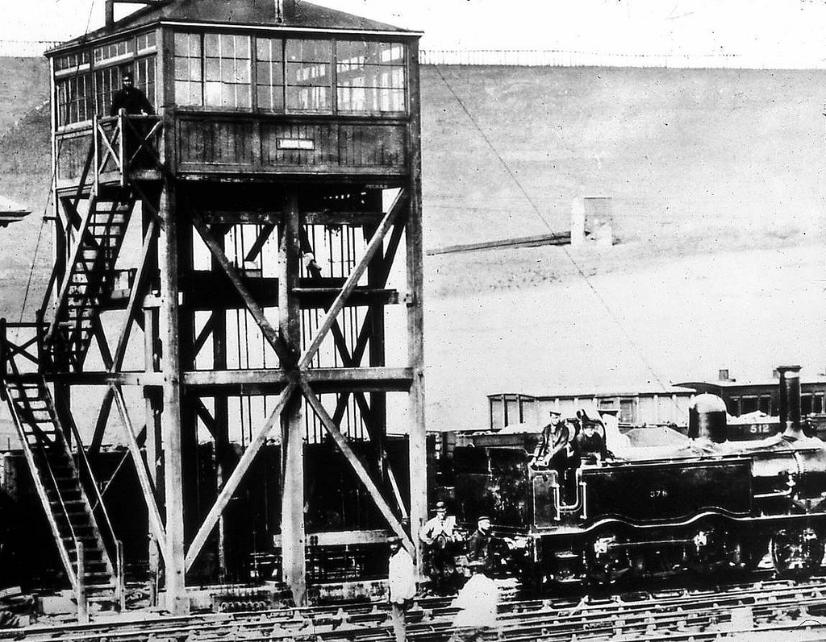
PHOTOGRAPHER UNKNOWN
BRIGHTON LOVER’S WALK
THE BEGINNINGS OF
RAILWAY TRADE UNIONISM
The first Railway Industrial Union was conceived out of desperate necessity after earlier attempts of individual grades to organise had failed to survive the counter attacks of the Railway Managements. These autocratic bosses mixed an odd sort of patriarchism with a discipline as rigid as the iron rails they spread in profusion across Britain. For the most part deeply religious, building churches to save the souls of their workers, they saw no ambiguity in breaking their bodies by excessive working hours and unsafe working conditions. Spurred on by the profits to be gained from this new form of transport, they quickly realised the value of political power.
Parliamentary representation was used both for promoting Railway Bills and for maintaining control over the workforce keeping the railways forging ahead. Although the Railway Companies were rivals in business they were united in crushing any attempts by their workers to unite themselves.
Various kinds of control were exercised-the fear of dismissal in an era of unemployment, threat of eviction from the housing accommodation provided and charged for by the Managements, a system of fines and a policy of "divide and rule."
Railways had been developing for a whole generation, and were employing whole armies of men, before Trade Unionism took root amongst them. Their widely different vocations, the many grades of railway service, and the scattered nature of this large army over every point of the country, all hampered that spirit of cohesion needed. Modest attempts had been made to organise the men, but without success.
The Railwaymen themselves, however, had a champion in Parliament and an unlikely one at that. Their cause was taken up by Michael Thomas Bass of the wealthy firm of brewers- M.P. for Derby. He was a substantial shareholder in the Midland Railway Company as well as being one of its best customers. With this influence he took up the cudgels both at shareholders' meetings and in the House, seeking a reduction in the intolerably long hours worked. Not only this, with the assistance of his full-time agent, Charles Bassett Vincent he helped and encouraged the railwaymen to organise. Under his initiative and at his expense, a weekly newspaper called the "Railway Service Gazette" was published to advance the interests of railwaymen. This was the forerunner of the "Railway Review".
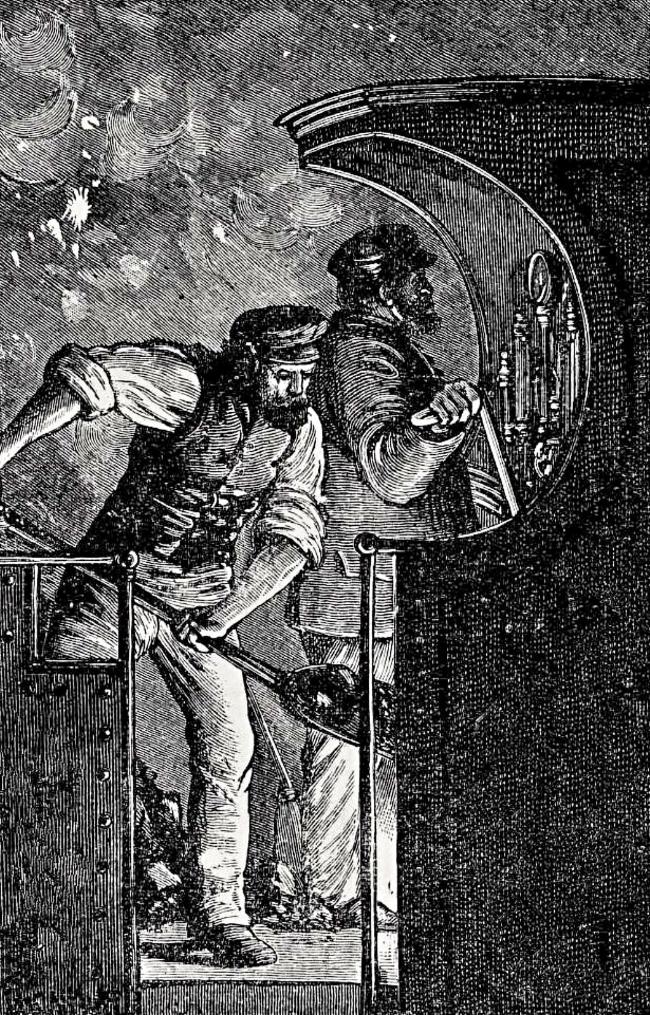
The Railway Workingman’s Provident Benefit Society
The Railway Working Man's Provident Benefit Society was founded in 1865 amongst the guards on the Great Western Railway, by Charles Bassett - Vincent, but two years later it was completely smashed by wholesale dismissals of its prominent members.
The Engine Drivers’ & Firemen’s Society
One of the earliest of the Enginemen trade unions was found on the North Eastern Railway, the Engine Drivers' and Firemen's Society was founded in 1865.
In April 1867 the members of this Society employed on the North Eastern Railway Company went on strike, with spontaneous enthusiasm for a reduction in their working hours of 12 hours per day, 84 hours per week. The strike was abruptly ended for want of discretion. Far to soon, and without adequate reserves.
To smash the strike the company recruited rogue footplatemen from other railway companies, by paying them special rates of pay providing they did not belonged to a trade union. Enginemen from The London North Western, The Midland, The Great Northern and the Lancashire and Yorkshire Railway Company, came forward to break the North Eastern Enginemen strike.
The strike was soon ended, with the leaders of the strike being hauled before the courts and charged. Out of the 1,050 strikers only 25 were reinstated and the union was finished
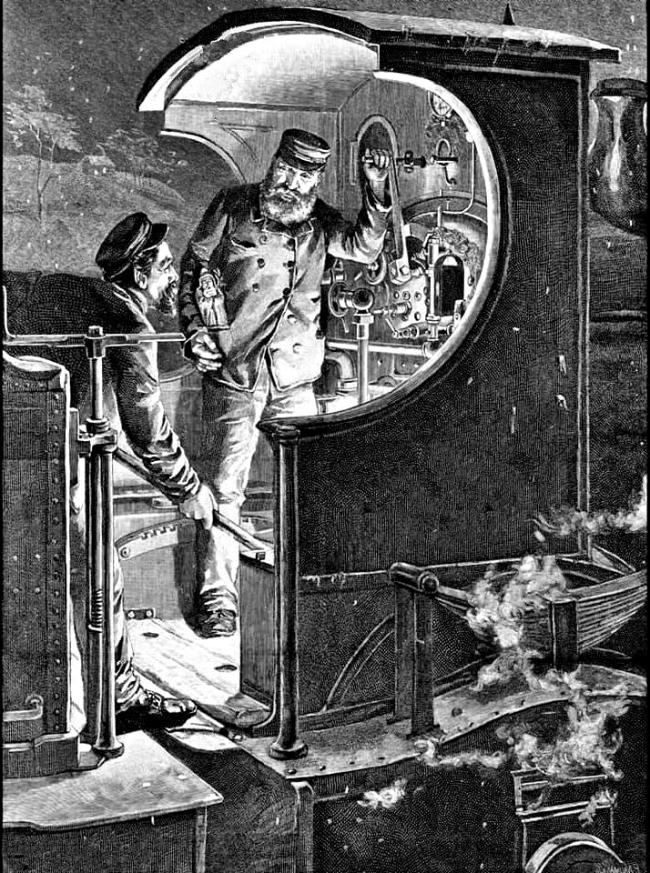
CHRIST’S HOPSITAL TO GUILDFORD
The Cranleigh line was opened on 2 October 1865. The Sussex Agricultural Express reported: “An event so important as the opening of this line might well have been celebrated by some public demonstration, but the timetable was simply issued and the first train left Horsham for Guildford at 6.35am with about a dozen passengers who had the benefit of being carried free. But inspection of the track decreed that Rudgwick Station could not be used since the gradient on which it was built was too steep at 1 in 80. This caused an uproar amongst local people who claimed that they were being isolated and villagers threatened to call out the fire brigade to "quench the Government Inspector's fiery spirit!".
The West Sussex Gazette of 10 October 1865 stated that the line was "likely to prove a more picturesque than profitable part of the Company."There was a counter-spirit that it had been built merely to provide connections with the LSWR at Guildford, and to give a through route to the Midlands.
Bramley (Surrey) 1865 -1887
The 1887 London South Western Railway Motive Power Depot and its predecessor housed London, Brighton & South Coast Railway engines after nearby Bramley shed blew down in an 1887 gale. For example Terriers Nos 36 Bramley and 77 Wonersh, at first and class ‘C’ 0-6-0 No. 420 from 1890s. All carried Guildford shed code, but returned to Horsham at weekends, for maintenance. This carried on until the Grouping when it ceased of course.
THE ENGINE DRIVES' & FIREMEN'S UNITED SOCIETY
FOUNDED 1865
This Society had its origins at London, Brighton and South Coast Railway at New Cross loco shed. The first meeting of delegates took place on the 1st September, 1865, "Sturdy Jim Thompson," of New Cross, being its president. By December, 1865, the society was fully organised, and at which, time Mr. J. Osbourn Putley (Potley) was appointed Secretary.
The Society started extending to the London Districts. At a meeting of the Society, held at the Forsters' Hall, Edgware Road, on April 15th, 1866, Mr. J. Putley, the Secretary, said there was nothing in the constitution of their society that need startle their employers or frighten the most timid of operatives. its object was to give counsel and advice to its members, and to sustain, by the moral power of a great united body, every effort to resist injustice and obtain a fair return for their labour, and while contending for these rights there was no antagonism to the rights of capital, but rater to promote and secure moderation and conciliation, and to secure the interests of both parties.
It would appear, however, that instead of masters and men becoming one in general good feeling, the latter were warned that these agitations would have to cease before any consideration whatever would be given to any application for redress of grievances, which only made matters all the more complicated and perplexing.
On July 30th and 31st, 1866, saw the first delegate meeting, which, was held at the Castle and Falcon Hotel, Snow Hill, Birmingham, a house famous for some of the most important meetings of railway servants ever held in this country. On this first occasion, London sent no delegates, although branches had been formed there. At the conference the delegates approving of the subjects under their notice, and endorsing the action of the extension of the society in various parts of the kingdom. A more uniform code of rules was adopted, after which many "waiting to see" joined with those already members, and soon the ranks of unity were swelled to a very large extent, and the men in the metropolis renewed their exertions and preserved in the work most zealously.
Meetings were held in different parts, and one of the most important took place on Sunday, August 19th, 1886, at Wilcock's Assembly room, Westminster Bridge Road, London, and was of a very enthusiastic character. In attendance was heartily supported by Mr. Putley, Mr Robert Edwards, editor of "The Train," and other prominent people, and who came to support. Other large meetings were held including the Metropolitan Music Hall, Edgware Road, on Sunday, October 14th, and this followed by a crowed meetings at Nine Elms and other important centres, and it was plain to see that this national combination was gaining a great hold upon the minds of the men, with a few to such an extent as to have created within them almost a fanatical fervour, and which tended more to hinder than to help the reform we were with all peacefulness endeavouring to bring about.
Extracted and adapted from The Railway Review 27th June, 1884
For The Engine Drivers' & Firemen's United Society Rule Book see sub page 1867
FRIENDLY SOCIETIES
The Friendly Societies, offered a primitive form of insurance where members paid in a small regular sum to be paid out of an agreed scale in the event of death or injury. In certain cases, though not very many, the companies encouraged the Societies by paying in a small annual sum themselves, a minute fraction of a percentage of the enormous profits they were making. but at the slightest hint that such Friendly Societies were anything more than insurance schemes, they reacted swiftly and savagely to crush them. Yet in spite of all these disadvantages, there were still attempts to form trade unions.
